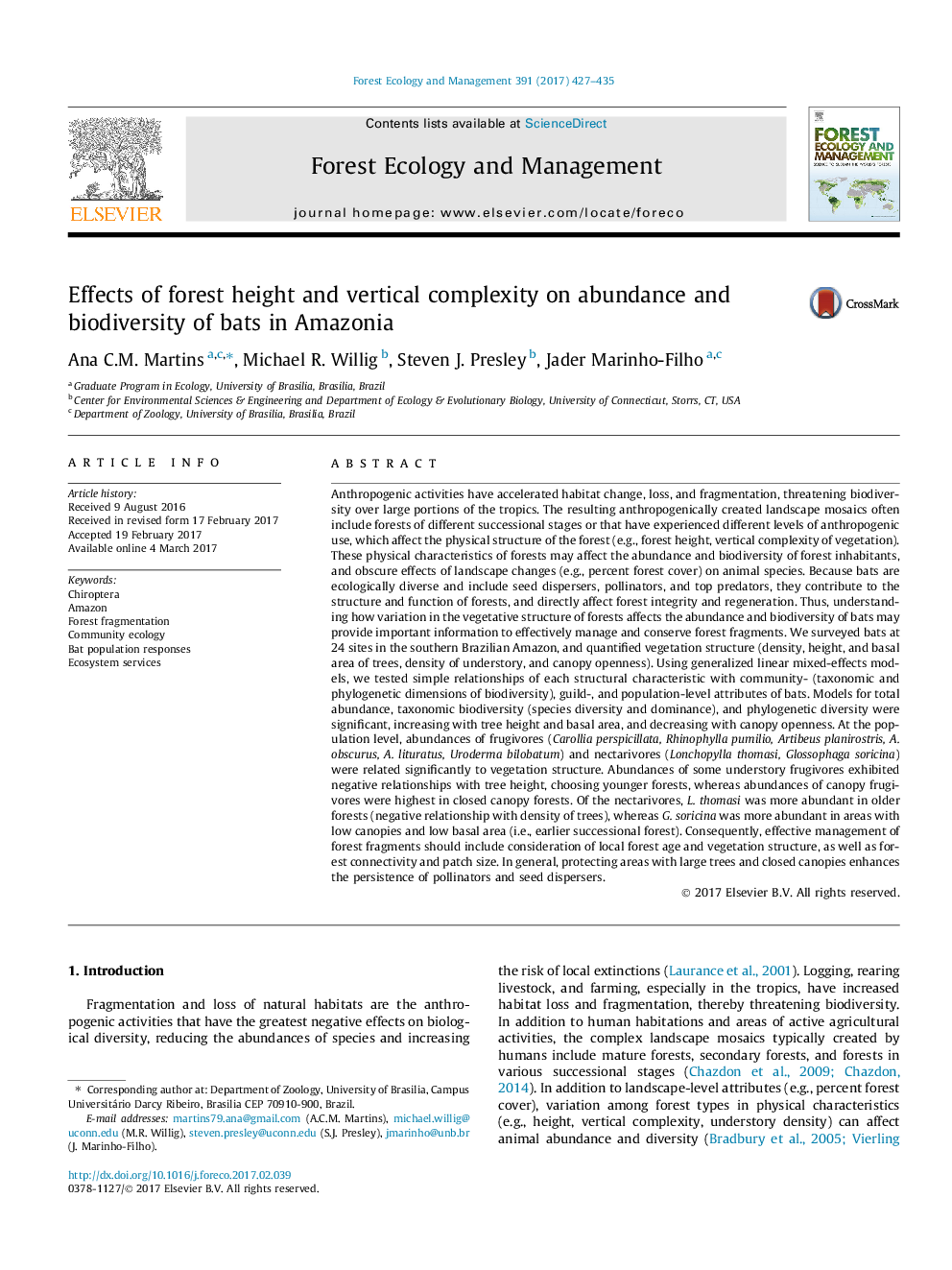| کد مقاله | کد نشریه | سال انتشار | مقاله انگلیسی | نسخه تمام متن |
|---|---|---|---|---|
| 6459484 | 1421367 | 2017 | 9 صفحه PDF | دانلود رایگان |
- We examine effects of forest structure on abundance and biodiversity of bats.
- Bats were sampled at 24 sites in a fragmented landscape in Amazonia.
- Taxonomic and phylogenetic biodiversity are greater in tall, closed canopy forest.
- Understory frugivores prefer younger forests with more open canopies.
- Protection of mature forest ensures persistence of pollinators and seed dispersers.
Anthropogenic activities have accelerated habitat change, loss, and fragmentation, threatening biodiversity over large portions of the tropics. The resulting anthropogenically created landscape mosaics often include forests of different successional stages or that have experienced different levels of anthropogenic use, which affect the physical structure of the forest (e.g., forest height, vertical complexity of vegetation). These physical characteristics of forests may affect the abundance and biodiversity of forest inhabitants, and obscure effects of landscape changes (e.g., percent forest cover) on animal species. Because bats are ecologically diverse and include seed dispersers, pollinators, and top predators, they contribute to the structure and function of forests, and directly affect forest integrity and regeneration. Thus, understanding how variation in the vegetative structure of forests affects the abundance and biodiversity of bats may provide important information to effectively manage and conserve forest fragments. We surveyed bats at 24 sites in the southern Brazilian Amazon, and quantified vegetation structure (density, height, and basal area of trees, density of understory, and canopy openness). Using generalized linear mixed-effects models, we tested simple relationships of each structural characteristic with community- (taxonomic and phylogenetic dimensions of biodiversity), guild-, and population-level attributes of bats. Models for total abundance, taxonomic biodiversity (species diversity and dominance), and phylogenetic diversity were significant, increasing with tree height and basal area, and decreasing with canopy openness. At the population level, abundances of frugivores (Carollia perspicillata, Rhinophylla pumilio, Artibeus planirostris, A. obscurus, A. lituratus, Uroderma bilobatum) and nectarivores (Lonchopylla thomasi, Glossophaga soricina) were related significantly to vegetation structure. Abundances of some understory frugivores exhibited negative relationships with tree height, choosing younger forests, whereas abundances of canopy frugivores were highest in closed canopy forests. Of the nectarivores, L. thomasi was more abundant in older forests (negative relationship with density of trees), whereas G. soricina was more abundant in areas with low canopies and low basal area (i.e., earlier successional forest). Consequently, effective management of forest fragments should include consideration of local forest age and vegetation structure, as well as forest connectivity and patch size. In general, protecting areas with large trees and closed canopies enhances the persistence of pollinators and seed dispersers.
Journal: Forest Ecology and Management - Volume 391, 1 May 2017, Pages 427-435
